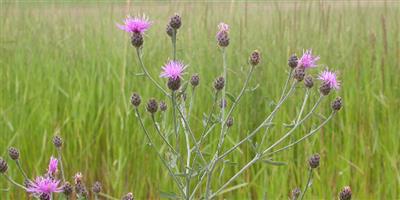by Kate Fuller, Stacy Davis, Jane Mangold, and Matt Rinella
Successful management of invasive plants is critical to maintaining healthy agricultural land wild land systems and relies on adequate funding. Adequate funding to achieve such goals,however, hinges on a clear understanding of what is being lost to weed invasions—for example, livestock forage production—and what is being spent to control weeds. Published information on the economic losses caused by invasive weeds is scarce. The most recent analyses of the effects of noxious weeds in Montana occurred some 20 years ago.
As part of a Montana Noxious Weed Trust Fund pilot study, we developed a 16-question survey concerning noxious weed management and associated costs. The survey was done in winter 2015-2016 and targeted livestock producers who were grazing livestock on privately owned range land in Montana.Survey responses were received from 129 people in 45 counties,with the majority of respondents grazing cattle (88{e1c719bd29d6bb84a792d8ffcb03a61a093900316f2da3efbd39b86f03d248b8}) followed by sheep and horses (29{e1c719bd29d6bb84a792d8ffcb03a61a093900316f2da3efbd39b86f03d248b8} and 23{e1c719bd29d6bb84a792d8ffcb03a61a093900316f2da3efbd39b86f03d248b8},respectively).
The majority of the survey referred to the largest contiguous block of privately owned or leased land on which respondents grazed livestock,which we referred to as “Block A.”The average size of Block A was 5,055 acres.The most common noxious weeds reported were Canada thistle,leafy spurge, and hound stongue. However, leafy spurge, Canada thistle, and knapweed (spotted and diffuse) were reported as causing the largest decreases in livestock production. Only 6{e1c719bd29d6bb84a792d8ffcb03a61a093900316f2da3efbd39b86f03d248b8}reported having no noxious weeds on Block A. Using information from other studies where field data estimated forage loss due to two state-listed noxious weeds, we estimate the average reduction in biomass resulting from the reported presence of spotted knapweed and leafy spurge at 0.7 and 0.8{e1c719bd29d6bb84a792d8ffcb03a61a093900316f2da3efbd39b86f03d248b8},respectively. We estimate the corresponding average value of the reduction in stocking rate is$0.40 per acre per year, or $2,022 for the average Block A.
CLICK HERE to read more
Source the Montana Conservationists



